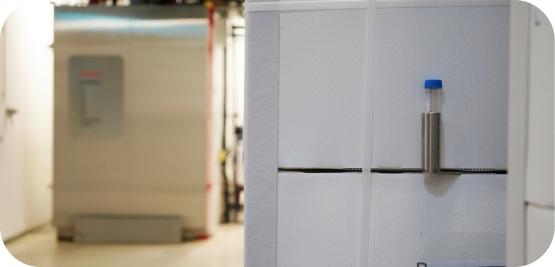(Download: The Sterilization Validation Steps Aligned with ISO 11135 in PDF by Medistri)
Bringing a sterile medical or pharmaceutical product to market requires more than a compliant label — it requires proof that your sterilization process is effective, consistent, and safe. Sterilization validation isn’t just a regulatory hurdle. It’s a methodical, traceable process that confirms your product can reliably meet the required Sterility Assurance Level (SAL) of 10⁻⁶, even under worst-case conditions. It ensures patient safety, regulatory acceptance, and operational readiness for routine production.
At Medistri, validation follows a clear, risk-based methodology aligned with ISO 11135. Each step is designed to reduce variability, confirm control, and deliver results that stand up to scrutiny — internally and with regulatory bodies.
1. Protocol Definition & Planning
Validation begins with a custom protocol, developed by Medistri’s Validation Team, in consultation with your team. It defines:
- Product scope, packaging configuration, and critical surfaces
- Load layout and worst-case orientation
- Sterilization parameters: temperature, humidity, exposure duration, and pressure
- Acceptance criteria, sampling plans, and test methods
This document governs the validation process and ensures alignment with your regulatory strategy.
2. Initial Bioburden Assessment
We quantify the natural microbial load on the product using validated recovery methods. This data is essential for:
- Selecting appropriate biological indicators (BIs)
- Defining the microbial challenge level
- Understanding inter-batch variability over time
Bioburden data also supports product-specific alert and action limits used in routine monitoring.
3. Biological Indicators & Process Challenge Device (PCD)
To simulate the most difficult conditions, we require Process Challenge Devices (PCDs) based on your product geometry. These include:
- Real or simulated product units
- Medistri’s Team places BIs in worst-case locations of the product (e.g. narrow lumens, overlapped areas, double barriers)
The PCD must represent the hardest-to-sterilize configuration.
4. Half-Cycle Execution (Microbiological Performance Qualification)
A sterilization cycle is run at 50% of the full exposure parameters. This is a critical stress test:
- All internal BIs must be inactivated
- Demonstrates the process can achieve SAL 10⁻⁶ with margin
- Confirms the effectiveness of the chosen parameters before moving to full runs
This step isolates efficacy from overkill — and builds the foundation for cycle qualification.
5. Full-Cycle Reproducibility (Physical Performance Qualification)
We perform two consecutive full sterilization cycles using the defined routine configuration. Each cycle must show:
- BI inactivation in all external PCDs
- Controlled, consistent physical parameters (pressure, temperature, time)
- Absence of product damage or packaging compromise
This step verifies that the process is reproducible, scalable, and production-ready.
6. Residuals and Chemical Safety Evaluation
Sterilization leaves behind chemical residues. We assess these through validated methods:
- Testing for residual sterilant and byproducts on products with highest absorption profiles
- Quantification of limits according to ISO 10993-7
- Application of Tolerable Contact Limits (TCLs) based on product use (surface, implantable, limited or prolonged contact)
Only products meeting the required thresholds are considered safe for clinical or commercial release.
7. Final Report Compilation & Regulatory Submission
All results are assembled into a comprehensive validation file:
- Final report, including:
- Raw data
- Equipment calibration and maintenance records
- Test reports and deviations (if any)
Why Structured Sterilization Validation Matters
Each phase of validation builds a documented chain of confidence — reducing uncertainty and supporting faster market access.
Medistri’s integrated validation services provide:
- Alignment with ISO and international standards from day one
- In-house laboratory testing: bioburden, sterility, residuals, endotoxins, and packaging integrity
- Reduced timelines by eliminating logistics between labs and sterilization sites
- Risk mitigation through strict process control and traceability
- Audit-ready documentation developed by specialists in validation, microbiology, and regulatory affairs
When Should You Validate?
Validation is required whenever:
- A new product or configuration is introduced
- You change sterilization methods, parameters, or suppliers
- You modify primary packaging or change load configuration
- You transfer production between facilities
Whether for new market launches or lifecycle changes, Medistri supports your team from protocol to final report.
Partner With a Fully Integrated Validation Provider
Medistri operates its own sterilization units, laboratories, and clean room support infrastructure, enabling:
- Seamless sample preparation and testing
- Faster turnaround with fewer handoffs
- Single point-of-contact project management
- Complete lifecycle support — from first validation to routine monitoring
We design sterilization validation programs that deliver technical certainty and regulatory confidence.
Reach out to our validation team to start planning your project.
To initiate your validation project or learn more about our services, visit our website here or contact us at sales@medistri.com.
— The Medistri Team
#Medistri
